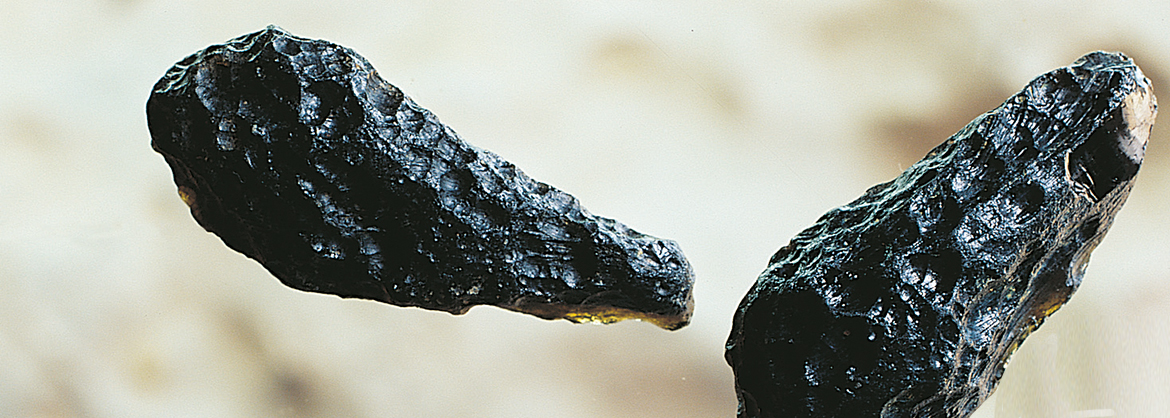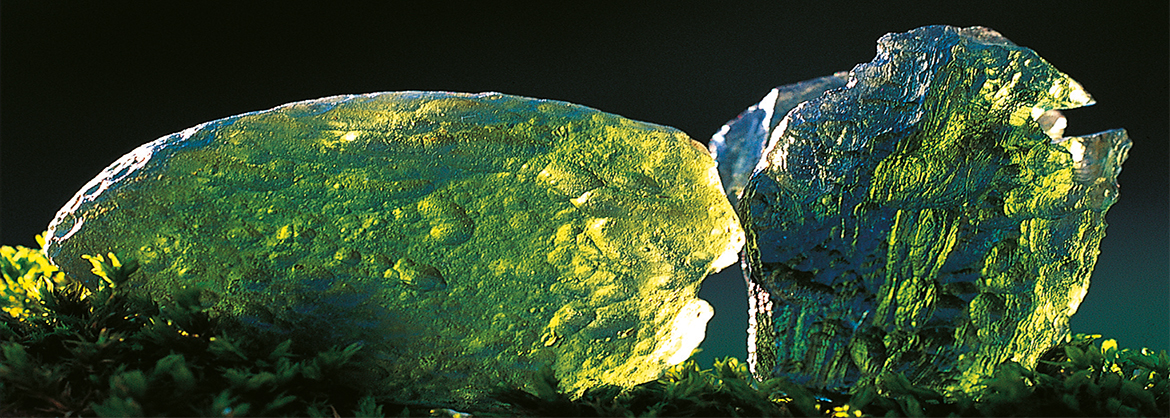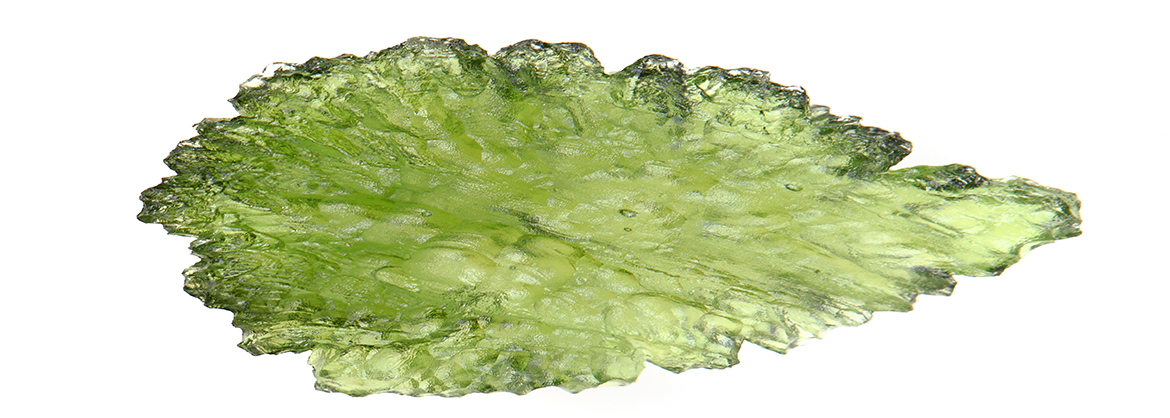
Tektites and Moldavites - Bearing, effect and application
Mineralogical profile of Tektite (Thailandite)
Chemical formula, mineral class: 60 - 80% SiO2 (oxide, rock glass), up to 10% Al2O3 (aluminum oxide) and other minerals, mainly silicates
Formation: Splashes of terrestrial material melted by impact of meteorites, cooled and solidified in flight
Color: depending on origin dark brown to black (Thailandite), yellowish-green (Lybian Glass), dark green (Moldavite)
Gloss: glass luster
Crystal system: Amorphous
Mohs hardness: 5 to 5.5
Cleavability, conchoidal fracture: No cleavability, conchoidal fracture
Localities, main supplying countries: China, Vietnam, Cambodia, Thailand, Malaysia, Indonesia, Philippines, Australia, USA, Ivory Coast, Czech
Appearance: furrowed, rough discs or nodules
Use: Popular collectible, rarely only as cut gemstone. Popular as a stone for silver and gold jewelry and due to the exciting Entsehungsgeschichte to the introduction to mineralogy
The stone medicine uses Tektite to promote empathy, clairvoyance and the realization of being a spiritual being. The attachment to material things wirs solved, so that the future can be viewed optimistically.
In gemstone astrology, Tektite is estimatedm for Virgo-born to reduce excessive need for security and to promote spontaneity and new ideas.
Availability: low
Name: The name Tektite derives from the Greek word tektos = melted. Tektites are usually named after the area where they are found - black tektite comes from Thailand and is therefore also called "Thailandite".
Jewelry with tektite, rough stones, stringed beads and other tektite items at wholesale prices

Mineralogical profile of Moldavite
Chemical formula, mineral class: SiO2, oxides, rock glass
Formation: splashes of terrestrial material melted by meteorite impact in Nördlinger Ries, cooled and solidified in flight
Color: Bottle green
Gloss: Vitreous luster
Crystal system: amorphous
Mohs hardness: 5 to 5.5
Cleavability, fracture: no fissility, conchoidal fracture
Localities, main supplying countries: mainly along the Vltava (Bohemia/Czech Republic); sporadically in Lusatia and Waldviertel
Appearance: Furrowed, rough slices or nodules; very light (usually under 20g/piece)
Use: Popular collectible, now also increasingly important as a jewelry stone. Findings from the Stone Age prove that Moldavite has been worn as an amulet for thousands of years. In gemstone astrology, Moldavite supports the connection of the Pisces-born with the boundlessness and vastness of the cosmos. It is used here to stimulate empathy and mediumistic abilities.
Availability: very low
Name: The name Moldavite is derived from the finding area on the banks of the Moldau.
Jewelry with moldavite, rough stones and other moldavite items at wholesale prices

Use of Moldavite in gemstone healing
Stone healing uses Moldavite to promote clairvoyance and the realization of being a spiritual being. Dissolution of (too) strong material attachment and liberation from worries about money and the future is supported. With the help of Moldavite the mental-spiritual quality of things can be grasped more easily, so that material aspects fade into the background. Moldavite strengthens the empathy and brings memories (again) to the surface, so that a deep insight into the meaning and the task of our existence becomes possible. With the insights gained in this way, unconventional and spontaneous approaches to solving problems and mastering complex tasks can be developed. For this Moldavite is gladly put on the "third eye".